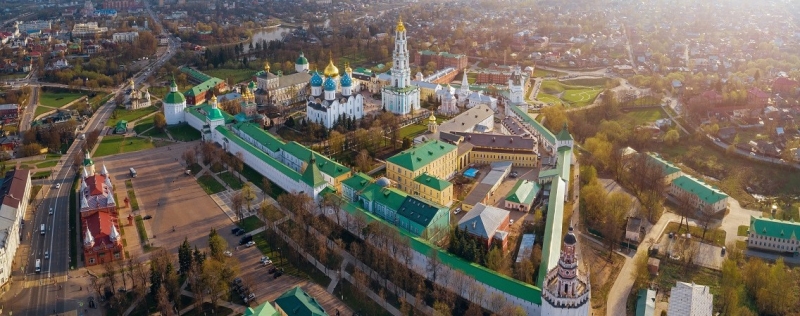
Cool, rainy, and sometimes snowy November is a time to warm up in cozy coffee shops and get acquainted with the history and culture of cities in museums. We offer five city tours for the upcoming long weekend.
Tomsk
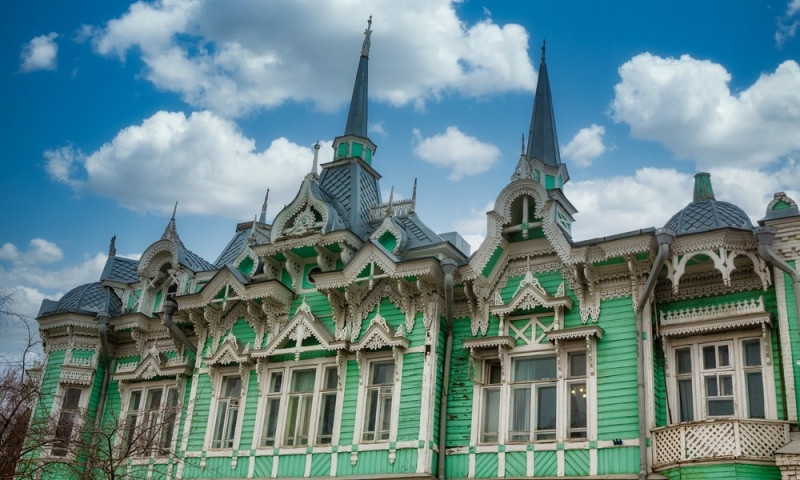
Relaxing in Tomsk is like being in a fairy tale. It is believed that tall wooden towers, intricately decorated with carvings, graceful turrets and openwork balconies, helped the writer Alexander Volkov come up with the image of the Emerald City. In the center, the historical buildings of the magical streets have been preserved, and houses with carved firebirds, dragons and patterned platbands have become the hallmark of Tomsk.
You can learn more about Russian fairy tales, rituals and magical creatures that were reflected in the design of merchant houses in the First Museum of Slavic Mythology.
However, not all chapters in the history of Tomsk are so fabulous. The exposition of the memorial museum “NKVD Investigation Prison” talks about Siberian exiles and political prisoners.
Another interesting fact about the city: the writer A.P. Chekhov spoke unflatteringly about Tomsk. According to legend, in response to this attack, already in the 21st century, a satirical sculpture “Chekhov through the eyes of a drunken man lying in a ditch and not reading Kashtanka” appeared on the city embankment.
After walking through the Tomsk gardens, you can have dinner at one of the city’s restaurants. “Eternal Call” is popular among tourists. On the menu you should choose local cuisine: Siberian dumplings, bear meat, venison and northern fish, and buy pine cone jam and pine nuts as souvenirs.
How to get there: by plane to Bogashyovo International Airport in Tomsk.
Where to stay: at the Scandinavia Hotel, room rates start from 6,600 rubles per night*.
Tyumen and Tobolsk
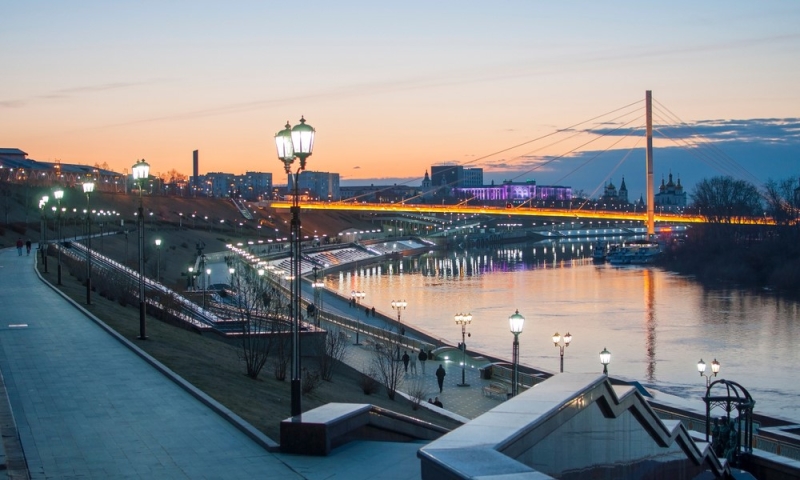
Because of its numerous hot springs, Tyumen is called the capital of thermal waters of Russia. Here, even in winter, you can swim in the city pool, undergo a treatment program at a sanatorium, combine spa and active entertainment at recreation centers, and receive luxury service at a hotel. When choosing a resort, it is important to pay attention to the medical profile of the establishment and the water temperature. In one of the hottest springs it is +48°C.
In addition to recreational recreation, the Tyumen region can also offer a cultural program. In tsarist times, Tyumen was a major transport and trade center; during the Great Patriotic War it served as an evacuation hospital, and from the mid-20th century it began to actively develop thanks to the discovery of oil fields. The bas-reliefs on the Tura embankment tell about the most important milestones in the history of the city. In the Tyumen region, in the village of Pokrovskoye, the odious mystic Grigory Rasputin was born. His house received the status of a museum.
It’s nice to combine a trip to Tyumen with an outing to Tobolsk, one of the oldest cities in Siberia on the banks of the Irtysh. The unique white-stone Tobolsk Kremlin houses thematic museums whose exhibitions tell about the history of the city and its inhabitants. For a long time, Tobolsk, the former capital of Siberia, was one of the main stages of Siberian hard labor. The exhibitions of the Prison Castle, where exiled prisoners served their sentences, tell about this, among them the writers Fyodor Dostoevsky and Nikolai Chernyshevsky.
You can immerse yourself in the life of the indigenous peoples of the north at the Tobolsk bone-carving factory and at the ethnic camp “House of Northern People,” which is located in the village of Kyshtyrla near Tyumen. Visits to these sites are possible by calling in advance. For gastronomic delights, go to the museum-restaurant of northern delicacies “Chum” in Tyumen. It’s worth bringing home Sosva herring, game stew and pine nuts.
How to get there: by plane to Tyumen airport and 3.5 hours by train to Tobolsk.
Where to stay: at the Vostok Hotel, from 4,200 rubles per night*.
Pskov, Izborsk and Pushkin Mountains
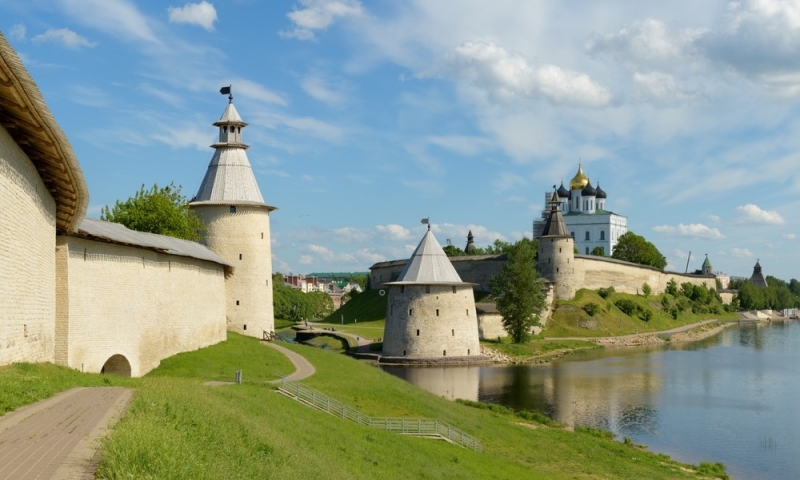
The Pskov region is one of the most poetic regions of Russia. Here is the Pushkin family estate Mikhailovskoye, where the poet is buried. Along with it, the Mikhailovskoye Museum-Reserve of A.S. Pushkin includes several other estates that belonged to family friends. One of them – Trigorskoye – is called the prototype of Tatyana Larina’s house, so the names of the objects and alleys in the park are associated with the novel “Eugene Onegin”. In the middle of the 20th century, the dissident writer Sergei Dovlatov worked as a guide at the museum, who described this period of his life in the satirical novel “The Reserve.” The writer’s house has been preserved in one of the neighboring villages. The area around the estates is referred to as the Pushkin Mountains – and indeed, from numerous hills there are picturesque panoramas of steppes, rivers and lakes, which are especially beautiful in autumn colors.
No less breathtaking views open from the powerful walls and thick crenellated towers of the medieval fortress in Izborsk. In the cemetery next to the citadel there is a mysterious Truvorov cross. Rumor has it that the legendary Varangian from Rurik’s squad is buried under it.
The powerful white stone fortifications of the Pskov Kremlin, one of the oldest in Russia, withstood numerous enemy raids. Innovative fortification solutions were implemented in equipping the fortress, for example, an internal harbor, the entrance to which is protected by two slender towers.
Not far from Pskov is the village of Vybuty, where, according to legend, Princess Olga was born.
How to get there: by plane or train to Pskov. From there by bus, car or taxi to the Pushkin Mountains or Izborsk.
Where to stay: at the Pushkin Hotel, accommodation prices start from 4,200 rubles per night*.
Ivanovo
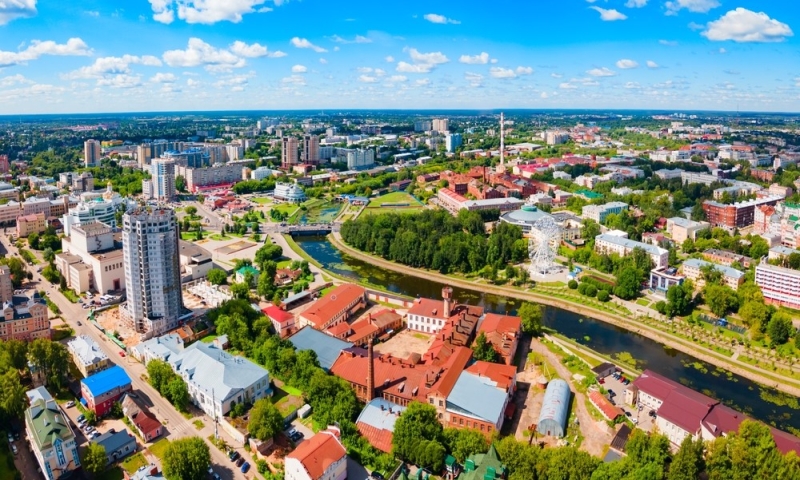
Ivanovo is a utopian city. Here the communists planned to create an environment for the formation of a new Soviet man. A small town known throughout Russia for its textile workshops was the first to support the revolutionary movement.
At the turn of the 19th and 20th centuries, Ivanovo became a major industrial center thanks to industrialists who established mass production of chintz clothing. Workers from all over the country began to come to the training workshops.
Interactive exhibitions of the Ivanovo Calico Museum, with which couturier Vyacheslav Zaitsev collaborates, tell about weaving. It is located in one of the most beautiful merchant mansions in the Art Nouveau style, which was owned by the large manufacturer D. G. Burylin. Another outstanding house is the Dürenger mansion, which today is divided into ordinary residential apartments.
To increase the attractiveness of Ivanovo for workers, the new Soviet government built the First Workers’ Village – an area implemented in the “garden city” concept. These are neighborhoods of two-story houses surrounded by greenery with their own vegetable gardens and front gardens, and you can still walk between them under the stern gaze of grandmothers. The demand for luxury housing was growing rapidly, and there was a shortage of premises. The project was quickly abandoned and the Collective House was built – a multi-story 400-apartment community, where all rooms, with the exception of bedrooms, were public. The idea did not take root, and the experiments continued. Young architects were invited to the city, who developed unique building designs, thanks to which today Ivanovo is called a “reserve of constructivism.” Mandatory points on the tourist route are “bullet house”, “ship house” and “bird house”. Don’t pass by the existing station, where one of the waiting rooms has been turned into an exhibition area.
Ivanovo received another informal name – “Russian Manchester” due to the abundance of factories and other red brick buildings. One of the most recognizable views of the city is the view from the Uvodi embankment to the water tower topped with a red star.
How to get there: from Moscow by Lastochka from Kursky Station the journey will take about 4 hours, and by regular train from Yaroslavsky Station – about 7 hours.
Where to stay:at the Soyuz Hotel, accommodation will cost 3,800 rubles per night*.
Elista
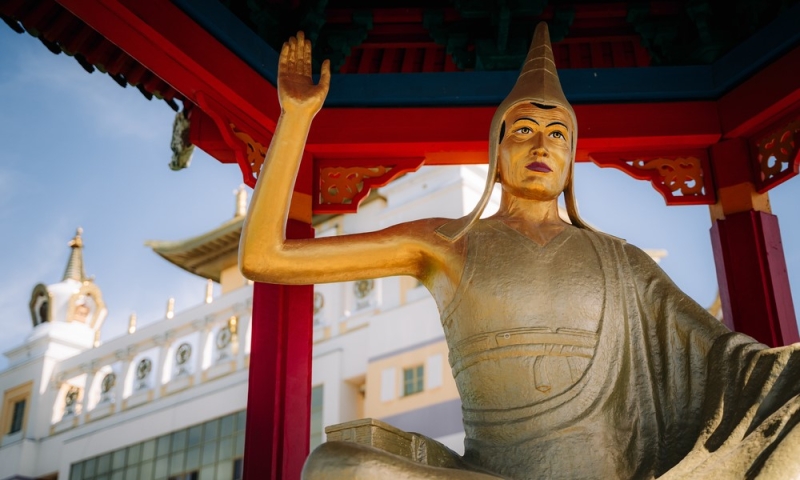
Kalmykia is the only region in the European part of Russia whose inhabitants profess Buddhism. Therefore, the city has many carved red and gold pagodas and other religious places of worship.
The Seven Days Pagoda is a tall multi-tiered structure with curved roof corners and a pointed spire. It is considered Elista’s calling card. The two-ton prayer drum installed inside contains 75 million mantras. Rotation of such a drum combines spiritual and physical labor: one rotation is equal to one reading of a prayer.
The main cult attraction of the city is the Golden Abode of Buddha Shakyamuni. The largest Buddhist temple in Europe was built in 2004. Also visit the Golden Gate, which rises on 15-meter pillars. Its façade is decorated with 28 paintings telling the history of Kalmykia. According to belief, by crossing this threshold, a person can be spiritually cleansed and recharged with positive energy.
You can learn more about folk traditions at the National Museum of Kalmykia. For example, the popularity of chess in this region is so great that on the outskirts of Elista they built the cultural and business quarter “City Chess” – “City of Chess”. While exploring the area, stop by the Museum of Nomadic Peoples, having previously notified you of your arrival by calling. Several yurts display national settings and life, and museum staff will tell you about local traditions and folklore.
You should start getting acquainted with the national cuisine with three typical dishes: dotur (lamb offal soup), makhan (lamb soup) and berigami (Kalmyk dumplings).
How to get there: by plane to Stavropol, and from there by bus to Elista.
Where to stay: at the Marco Polo Hotel, you can book a room for the night for 5,400 rubles*.
*Prices are current at the time of publication.

